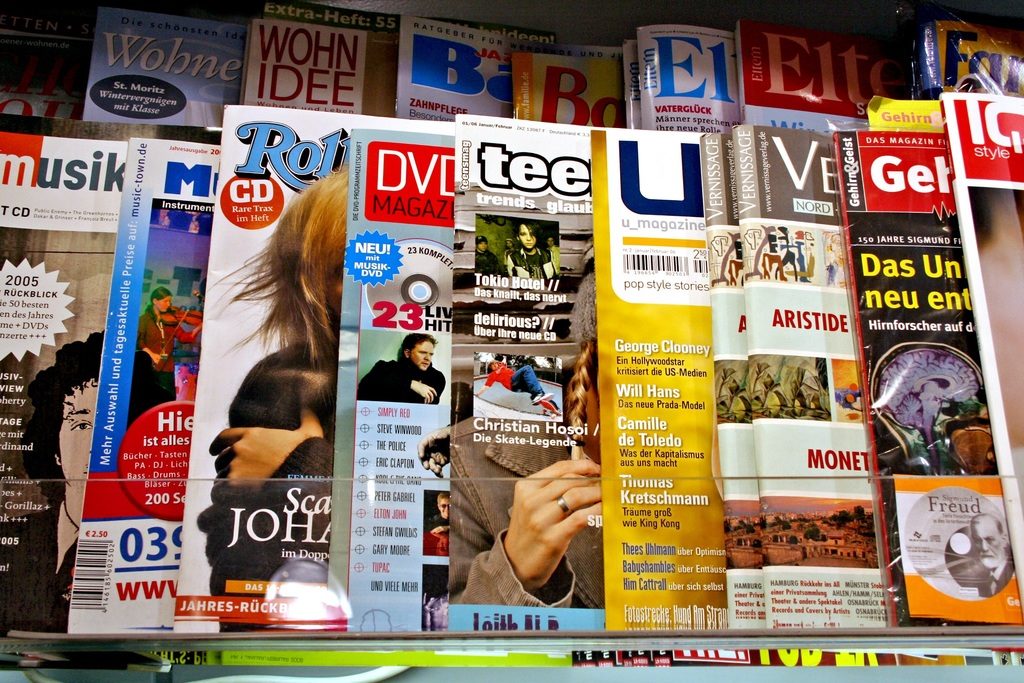Subscription Prices Skyrocketing
We seem to be in a new reality. Will readers accept it?

I’ve paid for magazine and newspaper subscriptions for going on four decades now—longer, if you count comic books. With rare exceptions of niche periodicals that could be written off as business expenses, one thing has been constant: they were really cheap.
Even as an undergraduate, I could subscribe to the likes of National Review, The New Republic, and Sports Illustrated without sweating the price. Sometimes, I’d have to let the subscription lapse for an issue or two to avoid being gouged but they would always come back with a low, low price.
The reason for this is well-known: the business model of all but a handful of newspapers and magazines was built around advertising. The subscription sales were essentially a loss-leader—they were practically giving them away to up their circulation figures so that they could charge advertisers higher rates.
The ad market has mostly gone away, for many reasons, and so the old model fell by the wayside. Newspapers, in particular, have been hit hard for going on twenty years. But attempts to fix this by hiking prices—or implementing paywalls for the online content—have mostly failed.
But something seems to have changed, rather radically, in recent months.
I’ve been subscribing to Foreign Policy essentially uninterrupted going back to the last days of the Reagan Administration. I’ve seen it transform from an oddly-sized academic journal to a glossy magazine to an online presence with the magazine as almost an afterthought.
For years, I was billed $2.99 a month for all-access. I’d get the magazine mailed to me and had access to all of the digital content. But a few weeks back, the subscription lapsed due to a combination of a credit card snafu and notices buried in my email inbox. The renewal rates start at $15.99 a month or $159.99 a year—and that doesn’t even include the magazine. That’s just nuts.
Similarly, I’ve been reading the Atlantic off and on, mostly on, going back to my graduate school days in the early 1990s. Subscriptions were always to be had for around $20 a year if one shopped around. Right now, they’re $49.99 for full access to the website, $59.99 for print plus digital, and a whopping $100 for ad-free online viewing. (I’m eligible for academic rates that cut those prices in half but most people aren’t.)*
There are several other examples I could list but you get the point.
This was, I suppose, bound to happen. Journalists, editors, and others who work at magazines and newspapers need to make a living and, if advertisers aren’t subsidizing the product, that cost has to be passed on to readers.
But I wonder how receptive most people will be to this new reality? We’ve been conditioned by decades of low prices to expect this content to be dirt cheap. Not to mention twenty-plus years of most of it being online at no cost whatsoever.
*UPDATE: I see that The Atlantic announced their new pricing strategy last September. Their explanation was that they’re trying to build a new relationship with readers. I suspect that’ll be easy, in that there will be a lot fewer of them.






My subs to Vanity Fair and Wired are unchanged. And my digital NYT sub is $1/week.
@Teve:
Yes, this seems to be affecting some content more than others. GQ, Esquire, and Car and Driver remain dirt cheap.
Are you sure about that? That’s the introductory rate but it goes up drastically if you don’t cancel.
@James Joyner: it’s $1/week for 1 year, then it goes to $17/mo, at which point I’ll switch to WaPo. 😀
Vanity fair and Wired though cost me about eight bucks apiece per year for several years now. Several months before the year runs out, they send you subscription renewals for a higher rate, and you ignore them and let the subscription lapse for a month and then they send you an offer for the introductory rate again.
from the mid-80s to around 2002, we had subscriptions to TIME, Newsweek, SI, and Discover at the office. What ended them was the web. There was so much access to information freely available, that the magazines became redundant.
Later, around 200-2010, I had subscriptions to Scientific American and Popular Science. This was because I traveled a fair bit to nearby cities on business, which often involved long periods of waiting. This was before I had a smart phone, so carrying a couple of magazines helped pass the time fruitfully.
A bit later, between smart phones, podcasts, and audiobooks, and less frequent travel, the subscriptions no longer made much sense.
The advertising business did this to themselves, and web-based businesses are complicit. If advertising had stayed simple and non-intrusive people wouldn’t mind them. Instead it became an arms race to see who could make the most obnoxious, in-your-face, advertising possible.
I run an ad-blocker, a script-blocker, a cookie-blocker, and a plug-in to disable animations. That handles most of it. When I got a new computer at work, I was shocked by what people have to put up with just to read a website. I quickly loaded my own browser with all the blockers.
I do have the ad-blocker set to allow unobtrusive ads (plain text or images).
I have no current subscriptions to any publication. Subscription prices went up for the local newspaper and I was hard pressed for cash from 2008-15 or from the start of my cancer treatments till my ebook writing started to take off. So any subscriptions (Like James, I subbed to both The New Republic and National Review) I had lapsed. The Palm Beach Post has jacked up their subscription prices and their newspaper has become thinner and thinner on its news content. Plus their delivery service frankly stinks. (Getting it on a newsstand isn’t any better. Most gas stations don’t carry the paper anymore*) I re-subscribed to the Post twice in recent years but quit them again because they’d fail to deliver the newspaper on average once every 7-10 days and I grew sick of having to call customer service.
*- A Publix store is only two miles from home but my cancer fight began, I have been leery to go out on my own except when absolutely necessary (and their have been times my doctors have forbid to drive). Almost blinding headaches have occurred more times than I can count. One of them when I was driving my old Maxima two years ago and I hit the center median on Lantana Road.
Most of the magazines I see now are in offices, and many are a year or more old. One restaurant has a lot of the ESPN magazines and I would take it if the price wasn’t so high. The schools dropped periodicals some time ago. The librarians would not put the Sports Illustrated swimsuit issue on the rack. One magazine that the schools subscribed to was Hot Rod. It seemed to get a lot of interest.
Usually some students come around in their annual fall fundraiser selling cookie dough, jewelry, and magazine subscriptions. Their prices weren’t too bad.
I subscribe to The NY Times, Washington Post and the Atlantic. Well worth every dime. Although if the Post ever goes back to pre-Trump “Republicans say the world is flat. Some Democrats disagree” style, I’ll drop them, as I did for the fifteen years prior.
In part as a research question, and in part being stubbornly determined to control what code runs on my computer/browser and what data is stored there, I block all sorts of things and delete others. The NYTimes, Washington Post, and the Atlantic all fall in the category I label as wishful thinking — if you don’t store data for them, and execute code they ask you to run, the firewall is disabled. Deleting cookies associated with those three sites often enough is all it takes.
Particularly the Times and Post are in a tough place. As the “newspapers of record” they can’t operate in a purely subscription mode (as the Wall Street Journal does, for example). The cost to produce their own content is high. There’s a lot of competition in the aggregation business (that is, there are lots of places now where you can read a Reuters or UPI article). The Times is probably in a worse situation — Bezos can afford to lose modest amounts forever on the Post.
I bought a gift subscription to Atlantic for a friend for just under $30 this year and renewed my subscription (after the policy change article your post mentioned) for $34 with all the bells and whistles (which I mostly don’t use). But I don’t read many magazines any more. When I was young, I subscribed to about 6 or 8, but after I started grad school, I couldn’t afford them anymore and would go to read them in the library instead. I may go back to that; it would be good exercise if nothing else.